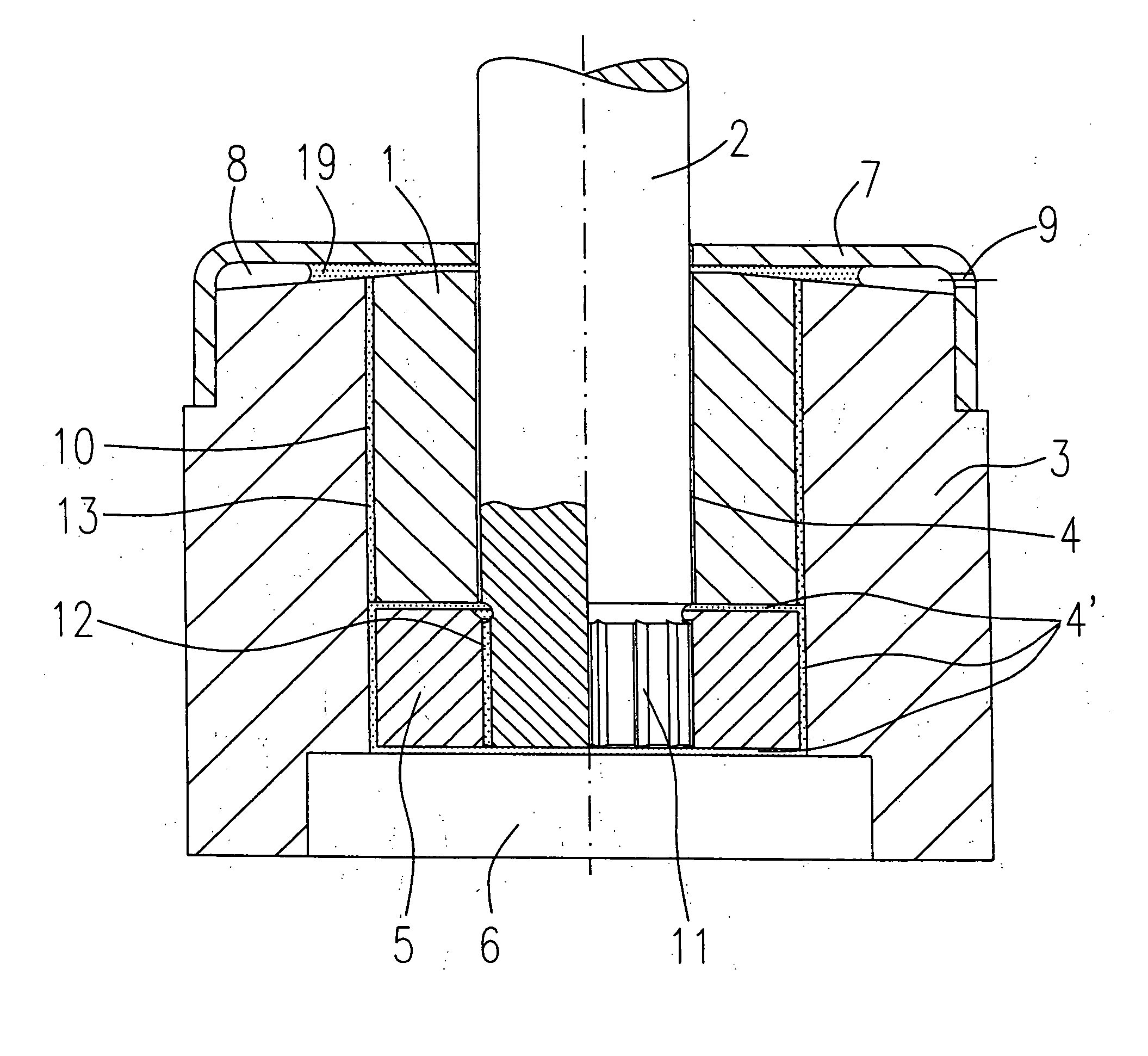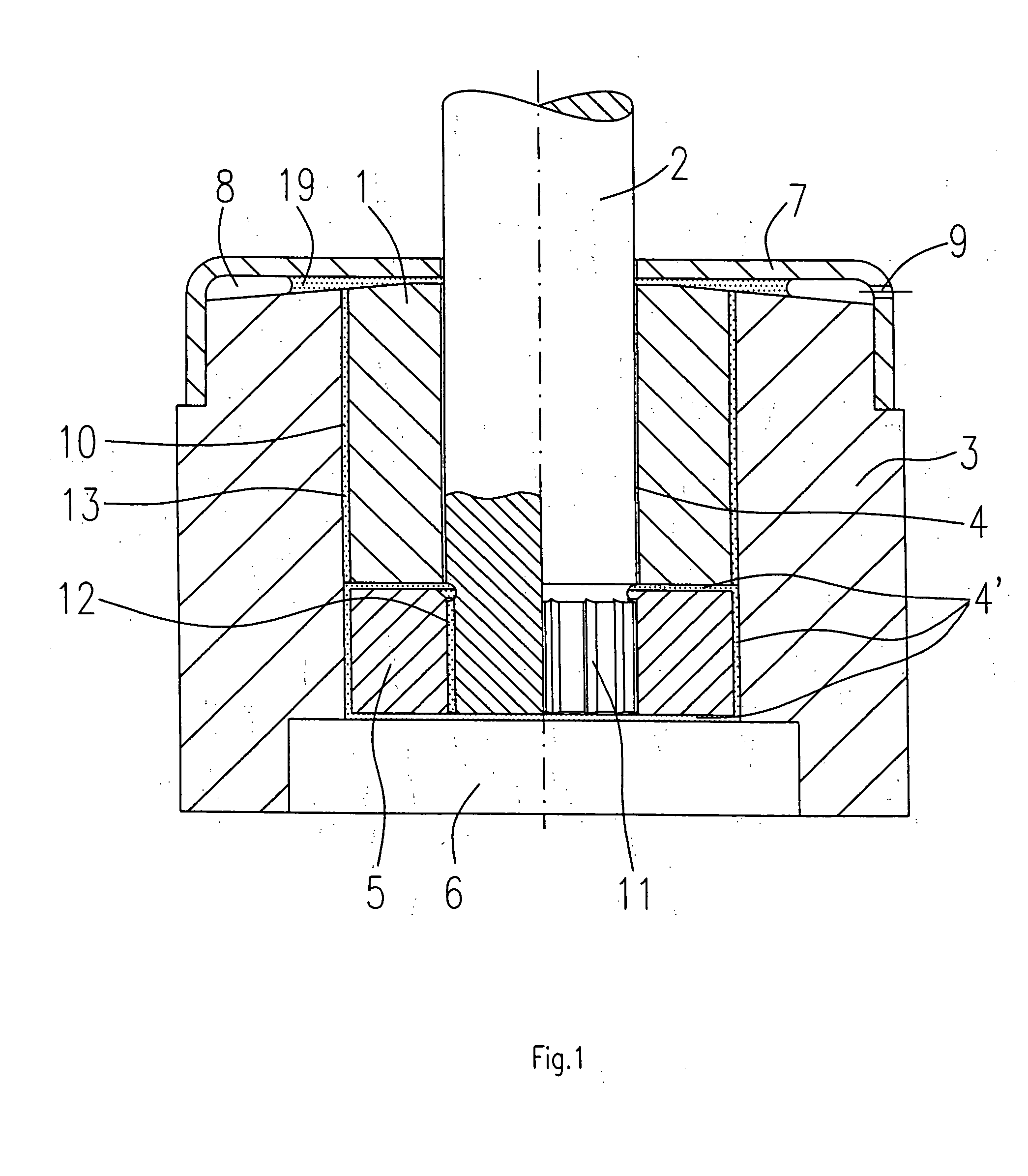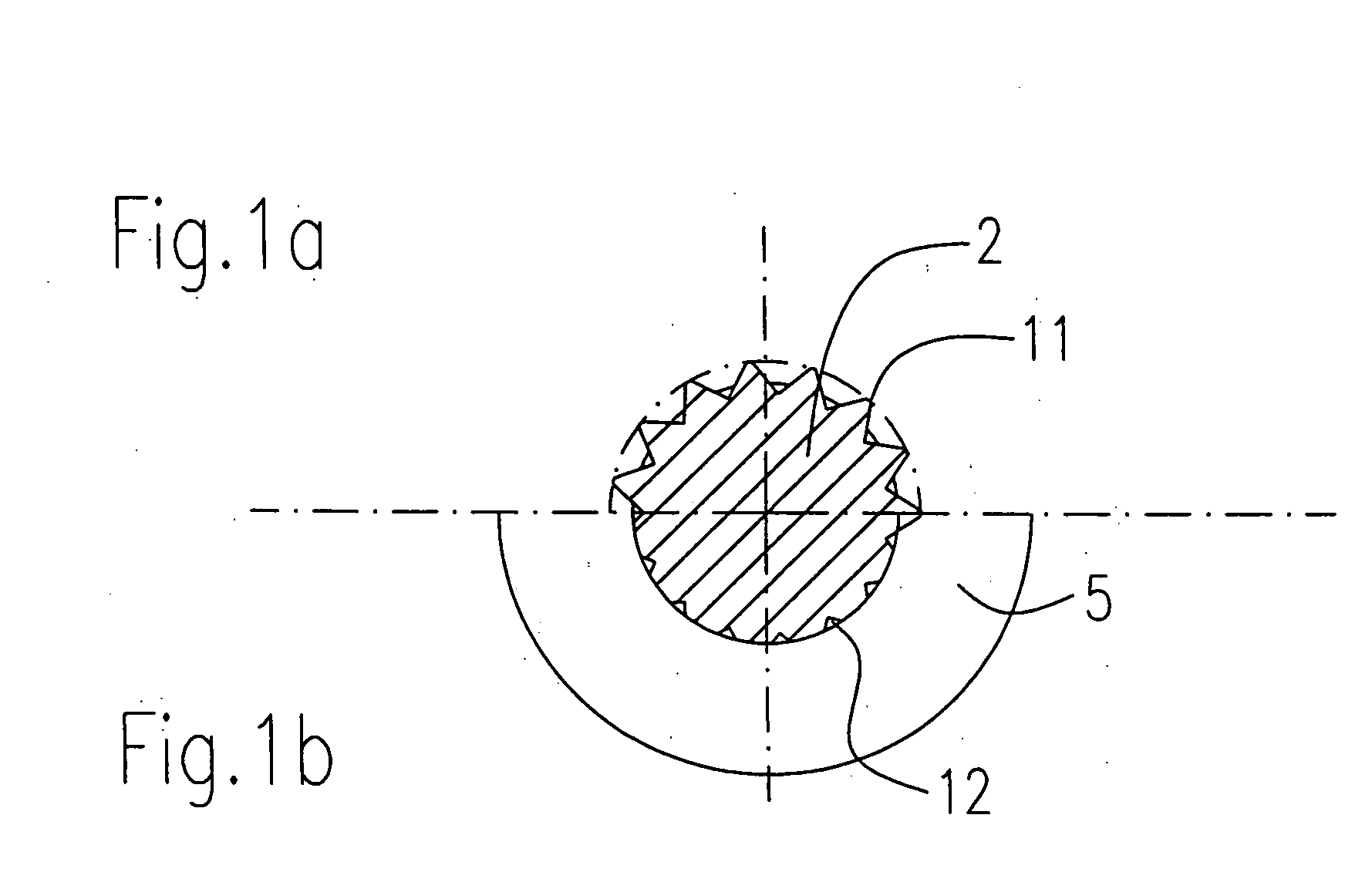Hydrodynamic bearing system
a bearing system and hydrodynamic technology, applied in the direction of sliding contact bearings, bearing unit rigid support, instruments, etc., can solve the problems of reducing the load carrying capacity of axial bearings, affecting the bearing performance, and disrupting the force balance, etc., to achieve the effect of effective lubricant circulation
- Summary
- Abstract
- Description
- Claims
- Application Information
AI Technical Summary
Benefits of technology
Problems solved by technology
Method used
Image
Examples
Embodiment Construction
[0029] The drawings show hydrodynamic bearing systems for spindle motors in hard disk drives according to the invention. In the illustrated embodiments, the shaft is rotatably supported in a stationary bearing sleeve. It is of course clear that the invention also includes designs in which a stationary shaft is enclosed by a rotating bearing sleeve.
[0030] The bearing arrangement according to FIG. 1 comprises an inner bearing sleeve 1 having an axial cylindrical bore in which a shaft 2 is rotatably accommodated. The bearing sleeve 1 itself is pressed into a bearing receiving portion 3. Between the inside diameter of the bearing sleeve 1 and the slightly smaller outside diameter of the shaft 2, there is at least one radial bearing region provided with a bearing gap 4 that is filled with a lubricant, preferably a liquid bearing fluid. This radial bearing region is marked by a groove pattern (not illustrated) that is provided on the surface of the shaft 2 and / or on the inner surface of ...
PUM
 Login to View More
Login to View More Abstract
Description
Claims
Application Information
 Login to View More
Login to View More - R&D
- Intellectual Property
- Life Sciences
- Materials
- Tech Scout
- Unparalleled Data Quality
- Higher Quality Content
- 60% Fewer Hallucinations
Browse by: Latest US Patents, China's latest patents, Technical Efficacy Thesaurus, Application Domain, Technology Topic, Popular Technical Reports.
© 2025 PatSnap. All rights reserved.Legal|Privacy policy|Modern Slavery Act Transparency Statement|Sitemap|About US| Contact US: help@patsnap.com



